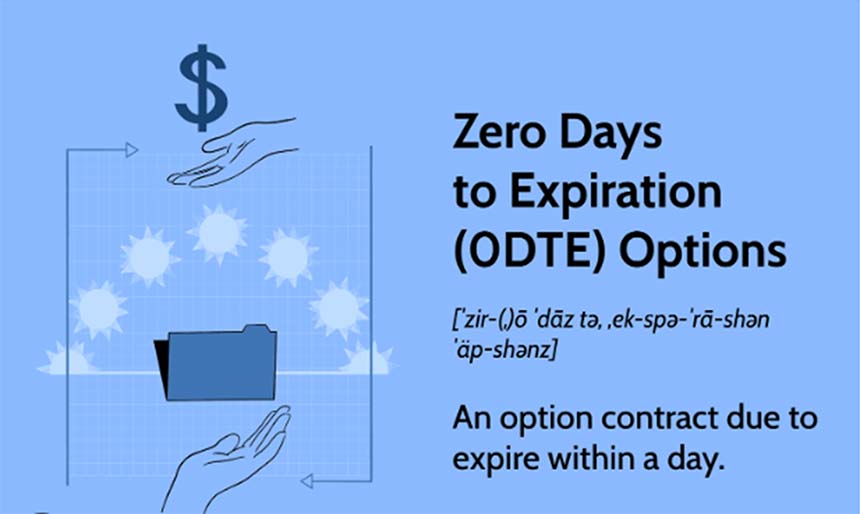A Deep Dive on Stop-losses for Options
There are no easy answers when using stop-losses – especially in the case of short-term options.
The truth is…
Short term options are subject to a lot of different factors.
These include…
1. Strike price: The price at which the holder of an option can buy (in the case of a call option) or sell (in the case of a put option).
2. Time decay: Also known as “Theta.” A concept in options trading that describes the value of an option decreasing over time as it approaches expiration date.
3. Volatility: The degree of price variation that involves several factors including implied and historical volatility, as well as overall uncertainty and fear in the markets.
4. Liquidity: How easily assets can be bought or sold in the market without affecting the asset’s price.
5. News: Positive or negative information that can swing a stock up or down.
That’s a lot of variables that can affect your trade.
But, you can mitigate some factors, however you can’t eliminate them.
If you place a narrow stop loss, say 25% on the option, you’re better off not trading short term options. You can see that move in an hour and well before expiration.
If you set a 50% stop-loss, you stand to lose 50% of your money in a trade – that’s no fun either.
To set a stop-loss that you can feel safe about, you should first use position sizing. In other words, allocate how much you will put into the trade BEFORE you enter the trade.
Then, allocate how much of that you are willing to lose – that will determine your stop loss. Forget percentages – use real dollars. Cash is one way of keeping it real.
Use short term charts for short term plays. Find the support and resistance points. Usually there are more than one of each. Decide which support level you think is critical. When that level is breached, you sell.
Because you are in a short-term option, time is critical. If you ignore time, you will get hammered. To figure out what time does to your options, you need to study the Greeks, not the people.
How Theta Affects Your Trade
I mentioned Theta and time decay above. The term theta refers to the rate of decline in the value of an option due to the passage of time. It can also be referred to as the time decay of an option. This means an option loses value as time moves closer to its maturity, as long as everything is held constant.
Delta is also important. Delta is the change in the value of the option based on the change in the underlying share price. If the option has a delta of $0.05, that means the value of the option AT THAT TIME will move up or down 5 cents for every move up or down of $1 in the stock and fractions thereof.
The problem with these variables is that they are dynamic and not static, so what is true at 10:30 a.m. may not be true at 10:45 a.m. So, you have to be on top of it – but this should give you an idea.
As I said earlier, stop-lossing is not easy – I hope you are getting that message. It requires diligence.
Another method for stop losses
One more way to set the stop-loss is to base it on the movement of the underlying shares.
This can work, but even a small move in the shares can result in losing a ton of your option premium, as you saw. That is because there is no time decay associated with the stock – greeks don’t matter when you own stocks. It’s a strategy that will allow you to preserve some capital, at best. There is no “foolproof system” or I would share it with you.
I do use a strategy to mitigate losses on short term plays – but it also limits my gains. I use spreads where I sell an option against an option that I own – this reduces my outlay – hence limits my loss, but it also limits my gain. But, if I am seeking 30% to 100%, it’s irrelevant since a spread will cover that type of gain.
I only issue longer term picks in the War Room and on the basis of fundamental analysis. That makes setting stops a lot easier. Still, I will not set stops on LEAP plays.
I will use stops, mental ones, but I will not set them. Why? Two reasons.
First, the amount I spend on a LEAP is usually well below the 20% or 25% stop-loss I use on stocks.
That said, why should I not swing for the fences with a LEAP if I’m already positioned sized properly and have less at risk than the stock – after all, in my mind a LEAP is a one year or two-year proxy for the stock.
Second, I use fundamentals. And, if the fundamentals have not changed, then I will not change my position UNLESS we are getting close to a point of no return – time matters even for LEAPS.
The key with LEAPS is to make sure you follow the formula of not paying more than 15% of the underlying share price for a one year expiration and no more than 20% for a 2 year expiration – those are you MAX losses as well.
I will mitigate the cost of my LEAPS further by using diagonal, calendar and vertical spreads – the common theme you will find in my trades is position sizing and risk mitigation. If you want fast action, it’s best to ignore my stuff.
![]()
YOUR ACTION PLAN
I use a variety of these strategies to reduce risk – covered calls, put sells (using my formula), spreads, LEAPS in The War Room. In all cases, my focus is on how to get a good return with low(er) risk. With LEAP plays. I am the least concerned. They can be volatile and they can lose – but they WILL NEVER LOSE more than I would lose if the underlying shares fell by 25% – that allows me to be more amenable to price swings.
To start following along with these LEAP plays, click here to join The War Room.
P.S. This June I’m hosting our 2nd annual bootcamp live in Montreal along with my colleague Bryan Bottarelli. If you want to learn these strategies in-person, there are still a few spots available.
Click here to get your ticket today.
FUN FACT FRIDAY
Let’s not argue about this: The Guinness book of records was invented by the Guinness beer folks. They figured a book of verifiable facts would help stop bar arguments.
More from Trade of the Day
The No. 1 Insider Stock for 2024?
Jul 26, 2024
Why I’m Buying This 3-month Trigger Catalyst
Jul 24, 2024
Jul 23, 2024

























